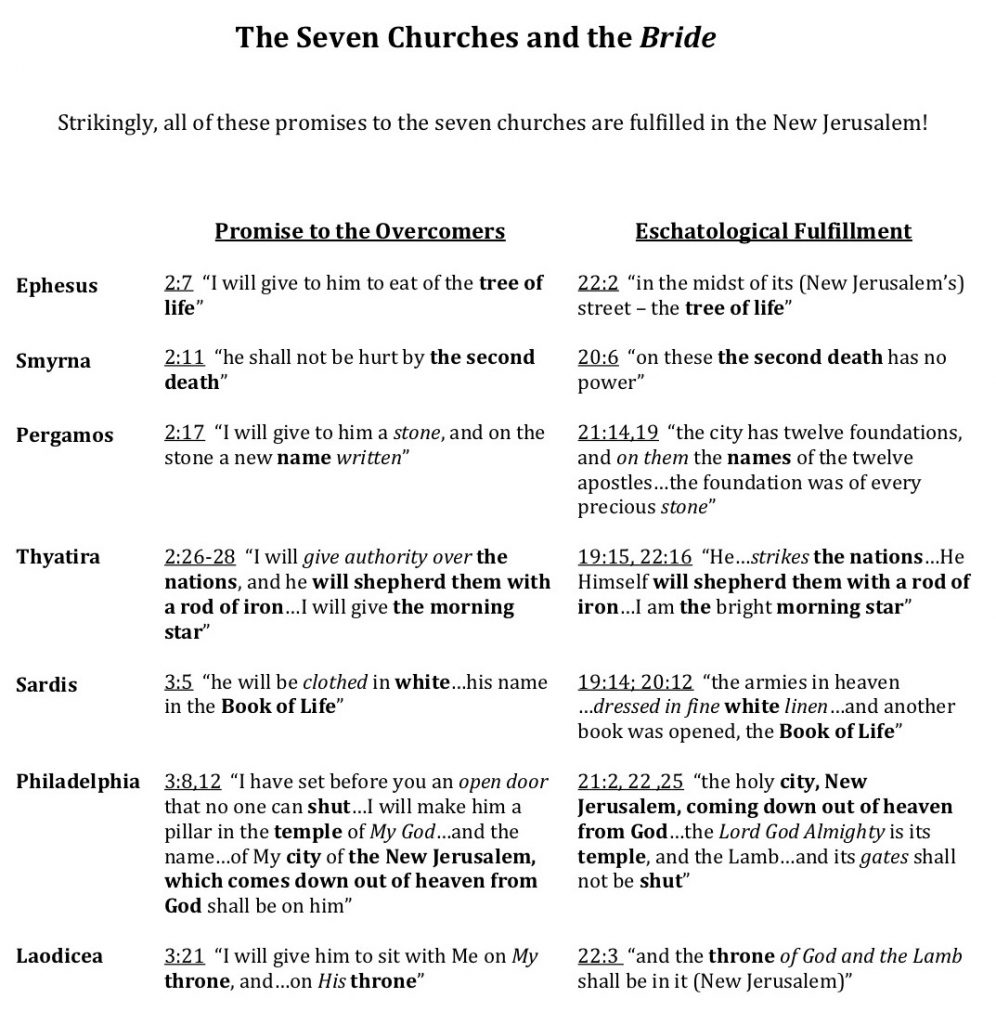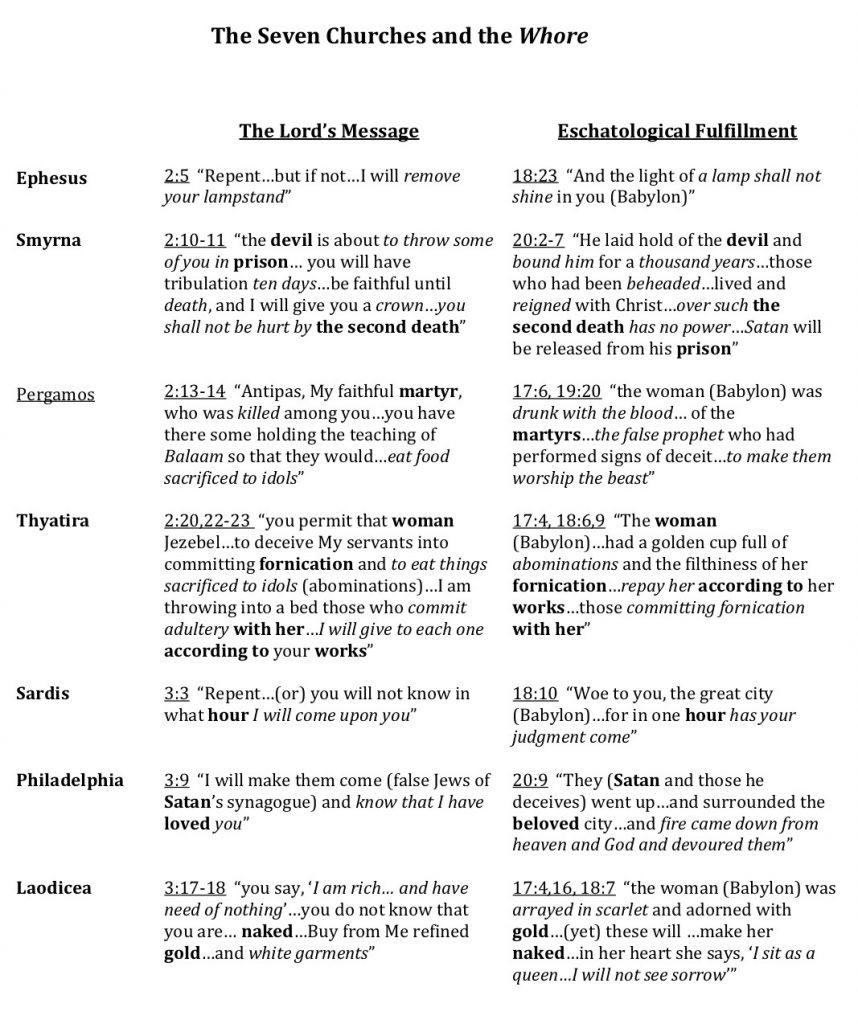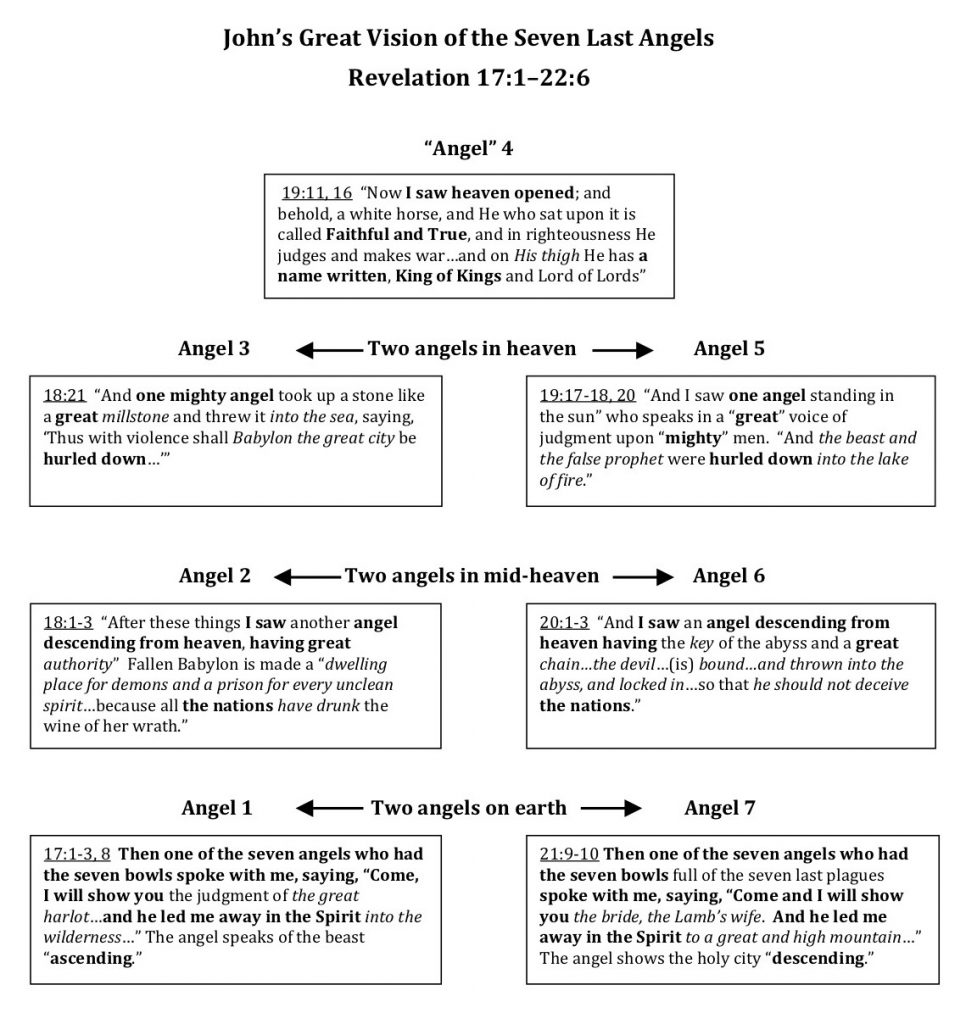In the Book of Revelation, John forewarns of the looming destruction of Jerusalem in 70AD. And he punctuates this warning with the following emphatic exhortation to the genuine people of God, “Come out of her, my people, so that you will not share in her sins, so that you will not receive any of her plagues” (Rev 18:4). But we are mistaken if we assume this exhortation was directed only to Christian residents in Jerusalem itself, upon which city this imminent physical destruction would soon descend. After all, John does not even overtly address his apocalyptic warning to those actually resident in Jerusalem, but chose rather seven churches in Asia Minor. And so we must ask why he would do this.
The answer lies in understanding the powerfully hostile and corrupting influence of Judaism upon the first century Church. Judaism, headquartered at Jerusalem, had become the enemy of God, and the enemy of God’s people. They not only killed their own husband by crucifying Jesus, they had then declared open war on Christians and Christianity. The history of this first century Church, as recorded in the book of Acts, is replete with repeated and vicious acts of hostility to the emerging Christian movement. And when the Jewish establishment lacked enough manpower to assault the Church directly, they created civil unrest, soliciting help from the surrounding Gentile community.
But their assault on the Christian Church was not always limited to frontal, outward attacks. Their next weapon was far more subtle and deceptive: infiltration of the movement with an eye to corrupting it from within, and co-opting it into subordination to Judaism. Paul identifies this tactic and addresses it head-on in his letter to the Galatians, where he laments that their corruption resulted in “No gospel at all!” (Gal 1:7).
This kind of Jewish corruption had seriously impacted every Christian church in the Mediterranean world. And so when John exhorts the people of God to “Come out of her, my people,” this was a warning to unequivocally separate themselves from the corrupting doctrines of Judaism which had afflicted all Christian churches in this era.
So as John writes to these seven churches, he affirms the good work of the Spirit in their midst, but warning that this corrupting influence is also at work. In John’s messages, therefore, we find a somewhat mixed message. John describes attributes which indentify and align each church with the bride of Christ, but also attributes of the Whore of Babylon (Jerusalem), which was destined to soon destruction. The following charts illustrate John’s mixed messages to these churches, with both sets of attributes highlighted, Bride v. Whore.



The last grand vision of Revelation, extending from 17:1-22:6, unfolds the same vision that Jacob saw in his dream at Bethel (Genesis 28), and that Nathanael, along with all the disciples, was promised in John 1:51. It is now climactically filled by John in his final Patmos vision in Revelation. It paints a picture of the climactic battle of Jesus the Bridegroom King with angels ascending and descending on His authority and carrying forth His purposes, resulting in the fall of Babylon the harlot and the triumphant unveiling of the New Jerusalem, the bride of the Lamb.
The initial verbiage in the foregoing article was written by Paul Trask, and the scriptural analysis is the work of Steve Carpenter.